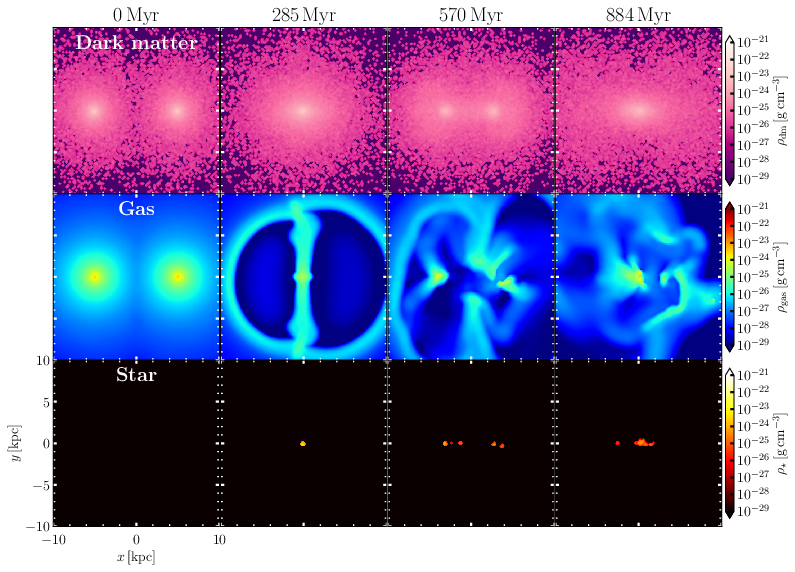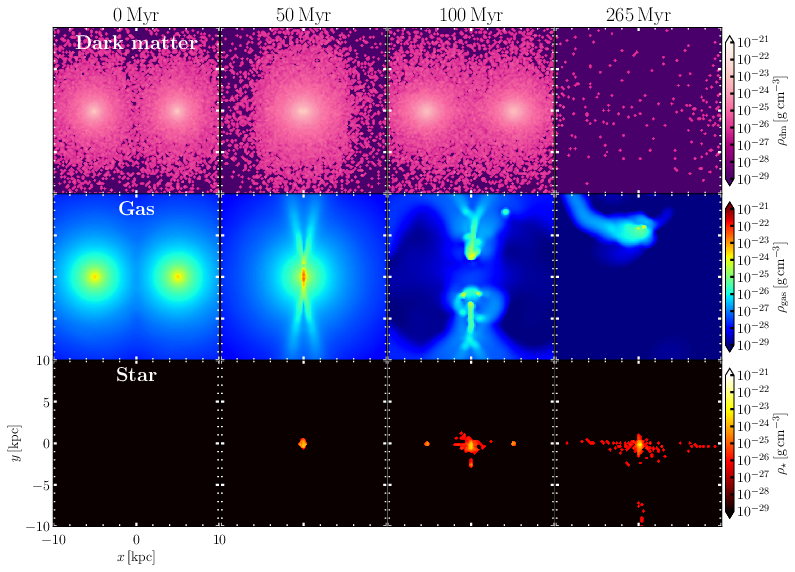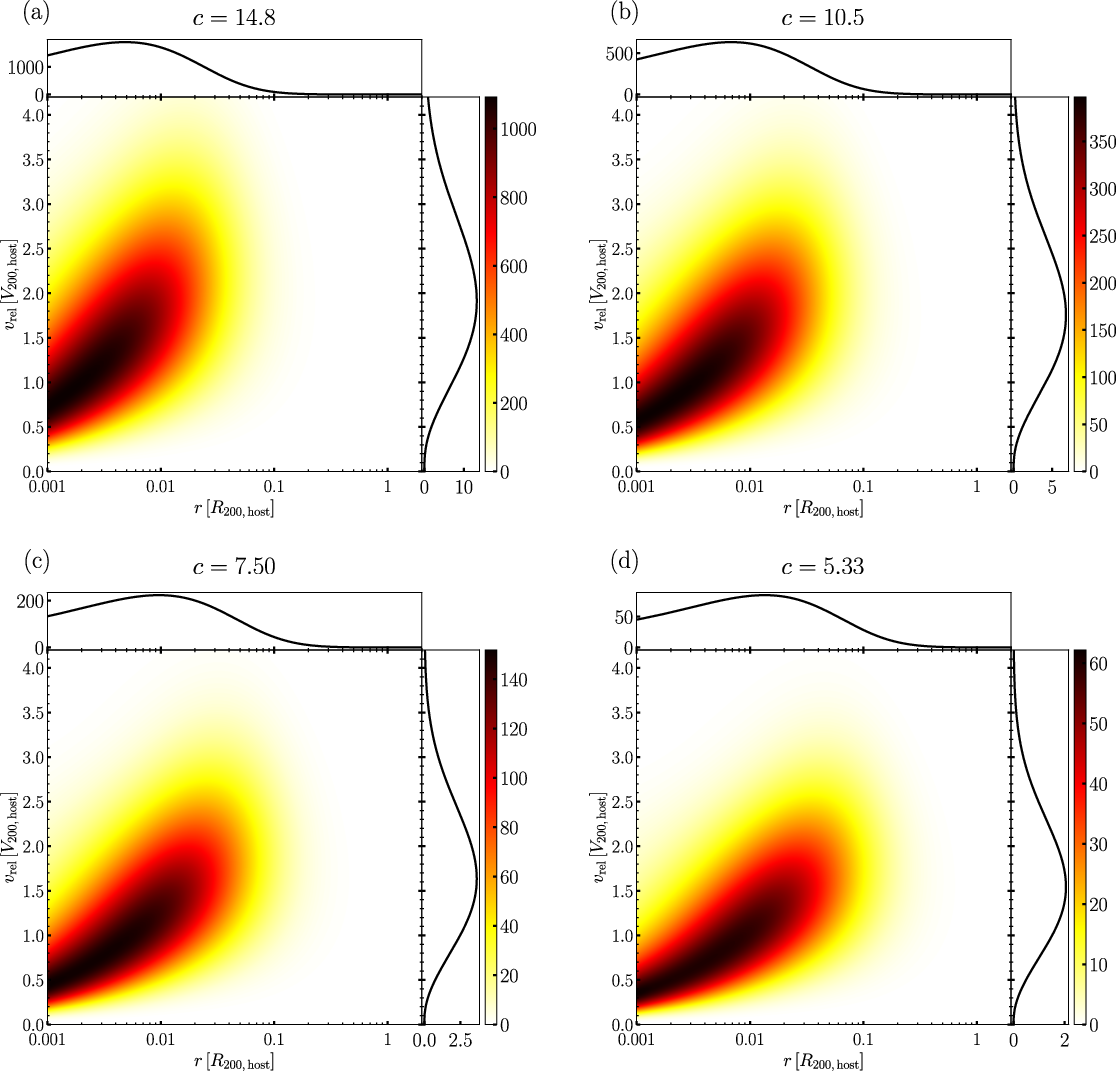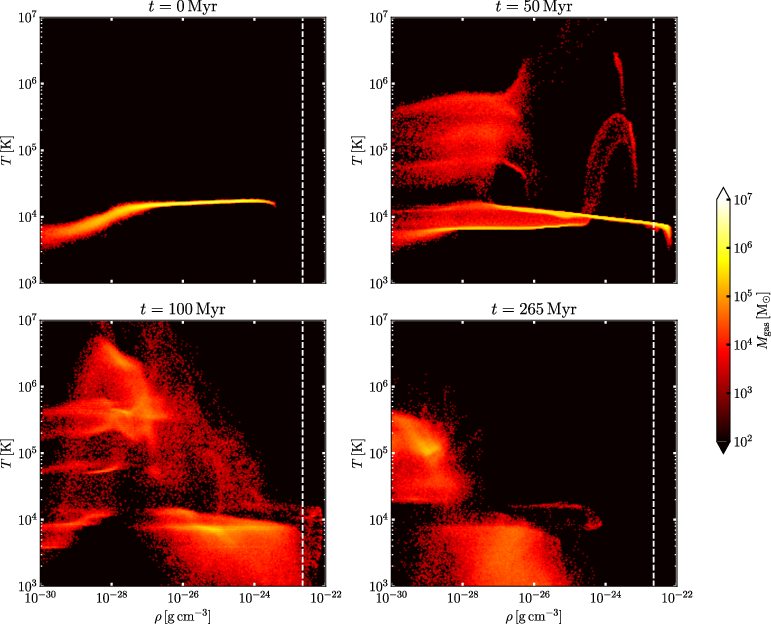研究成果・発表論文
Frequency of the dark matter subhalo collisions and bifurcation sequence arising formation of dwarf galaxies
Otaki, Koki, & Mori, Masao
要旨
The cold dark matter model predicts galaxies have 100 times more dark matter mass than stars. Nevertheless, recent observations report the existence of dark-matter-deficient galaxies with less dark matter than expected. To solve this problem, we investigate the physical processes of galaxy formation in head-on collisions between gas-containing dark matter subhaloes (DMSHs). Analytical estimation of the collision frequency between DMSHs associated with a massive host halo indicates that collisions frequently occur within one-tenth of the virial radius of the host halo, with a collision time-scale of about 10Myr, and the most frequent relative velocity increases with increasing radius. Using analytical models and numerical simulations, we show the bifurcation channel of the formation of dark-matter- dominated and dark-matter-deficient galaxies. In the case of low-velocity collisions, a dark-matter-dominated galaxy is formed by the merging of two DMSHs. In the case of moderate- velocity collisions, the two DMSHs penetrate each other. However, the gas medium collides, and star formation begins as the gas density increases, forming a dwarf galaxy without dark matter at the collision surface. In the case of high-velocity collisions, shock-breakout occurs due to the shock waves generated at the collision surface reaching the gas surface, and no galaxy forms. For example, the simulation demonstrates that a pair of DMSHs with a mass of 109 M⊙ containing gas of 0.1 solar metallicity forms a dark-matter- deficient galaxy with a stellar mass of 107 M⊙ for a relative velocity of 200kms-1.








 Ja En
Ja En